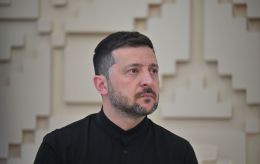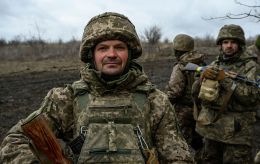New details of US peace plan for Ukraine: What changed after Geneva talks
 Photo: Main meeting in Geneva between delegations from the US and Ukraine (photo: Reuters)
Photo: Main meeting in Geneva between delegations from the US and Ukraine (photo: Reuters)
Following negotiations in Geneva, the US and Ukrainian delegations managed to agree on most of the provisions of the US plan and to amend a substantial part of the controversial ones, according to an RBC-Ukraine article Trump's ultimatum and 28 points: What's really happening with Ukraine peace plan.
After the Geneva talks, US Secretary of State Marco Rubio said that certain changes would be made to the American plan. He specified that this meeting was the most productive in all ten months of work on the peace process. Yermak, who headed the Ukrainian delegation, also said that the dialogue was very productive.
The delegations in Geneva managed to agree on most of the provisions of the US plan and to adjust a significant part of the controversial ones.
These include the issues of the size of the Armed Forces of Ukraine, the Zaporizhzhia Nuclear Power Plant, the format of prisoner exchange, and the return of convicts.
However, according to RBC-Ukraine, the delegations agreed to put aside the points concerning territories and enshrining Ukraine's non-accession to NATO in the Constitution – they are to be discussed and agreed upon at the level of Presidents Zelenskyy and Trump. Their meeting may take place this week or next, although no specific date has been agreed upon in Geneva.
The 28 points published in the media last week are not a final document, but rather material submitted to the Ukrainian side for discussion. These 28 points were the subject of yesterday's talks in Geneva between the Ukrainian and American delegations.
Territorial issues
Some of the most controversial provisions in the draft plan concern territorial issues, primarily the demand for the Ukrainian army to withdraw from the Donetsk region.
"Last week, US military officials came to Kyiv with their assessment that the frontline situation is not in our favour. They believe that the coming months will be critical for us and that in 12 months, we will still lose the Donetsk region. And if they cut off all support, it could happen even sooner," one RBC-Ukraine source said.
According to the US plan, part of the Donetsk region is to become a neutral demilitarized buffer zone under Russian control, while the occupied Crimea, Luhansk, and Donetsk regions will be de facto recognized as Russian. The front line in the Kherson and Zaporizhzhia regions will be frozen.
In return, according to the American proposal, the Kremlin must withdraw from other occupied territories outside the five regions — in the Sumy, Kharkiv, Dnipropetrovsk, and Mykolaiv regions.
Reduction of the Armed Forces of Ukraine
Other controversial points in the initial version of the plan include joint control by Ukraine and Russia over the Zaporizhzhia Nuclear Power Plant and a reduction of the Armed Forces of Ukraine to 600,000. At the same time, there is no direct mention of the Russian Church, the Russian language, or restrictions on Ukrainian weapons.
“Regarding the army's size, the Americans directly asked our officials during their Kyiv visit: if not 600,000, then how many do you need — 800,000?" one RBC-Ukraine source said.
According to RBC-Ukraine's interlocutors, the further path of the peace plan should look like this: if Ukraine is able to agree on the final points with the US in the near future, and the US can agree with its European partners on the provisions that directly concern them, then American negotiators will use this agreed plan to follow the same carrot-and-stick approach to persuade Russia.
Negotiations on a peace plan for Ukraine
On November 20, the US presented a 28-point peace plan for Ukraine. According to the document, Ukraine must withdraw from Donbas, reduce its army, give up long-range weapons, and more.
On Sunday, November 23, consultations were held in Geneva between the US, Ukraine, and Europe to make the document more favorable for Kyiv.
Following the negotiations, Ukraine and the US prepared an updated and revised framework document on peace and agreed to continue intensive work on joint proposals in the coming days.

